
The North – where many key economic regions are concentrated, is witnessing the shift of foreign capital investment and the strong establishment of a transport network to the economic center of the region. This is the promised land for the real estate industry.

Looking at the whole picture, Vietnam’s GDP growth rate is considered outstanding compared to many other countries, and foreign investment capital has also shown clear growth over the past 10 years.
In the structure of the import and export value of the whole country, the import and export value of the North has been growing in the past 5 years, almost equal to the South, although the import and export volume is less.

Comparing the volume of goods cleared through the land in the 5 years from 2018 to 2022, the volume of goods cleared through key economic regions in the North is almost twice that of the South. This fact proves that the road infrastructure and highways in the North have developed outstandingly. In particular, it is expected that by 2030, the government will still focus on developing road infrastructure and highways connecting inter-regional and intra-regional areas and going out of the North to other key economic regions of the whole country with a length of nearly 11,000 km.
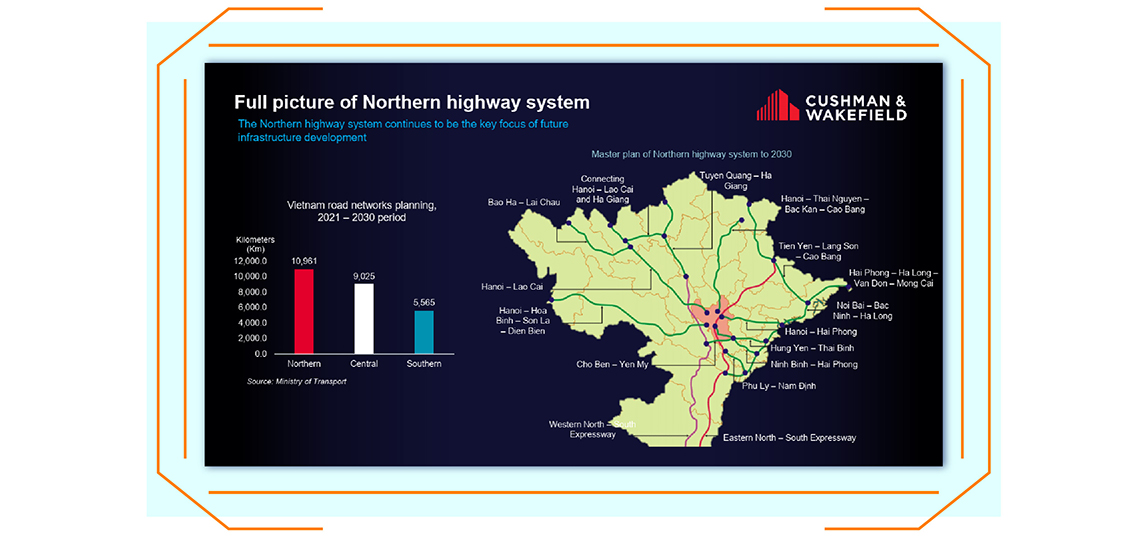
The North also contributes more than 60% in export value if we talk about airways. More than 66 airlines are operating at the cargo terminals of the North. The seaports of the North are also very close to the key economic centers of Asia, in which it is impossible not to mention the area known as the “Silicon Valley” of China. The North itself is also becoming a center for supplying semiconductors with investments from Samsung, Intel, FPT Semiconductor, or the handshake between Vinfast and Infineon Technologies AG…

In the general gloomy context of domestic real estate, there are still bright spots that investors consider to have many opportunities – the segment of industrial real estate and factory real estate.
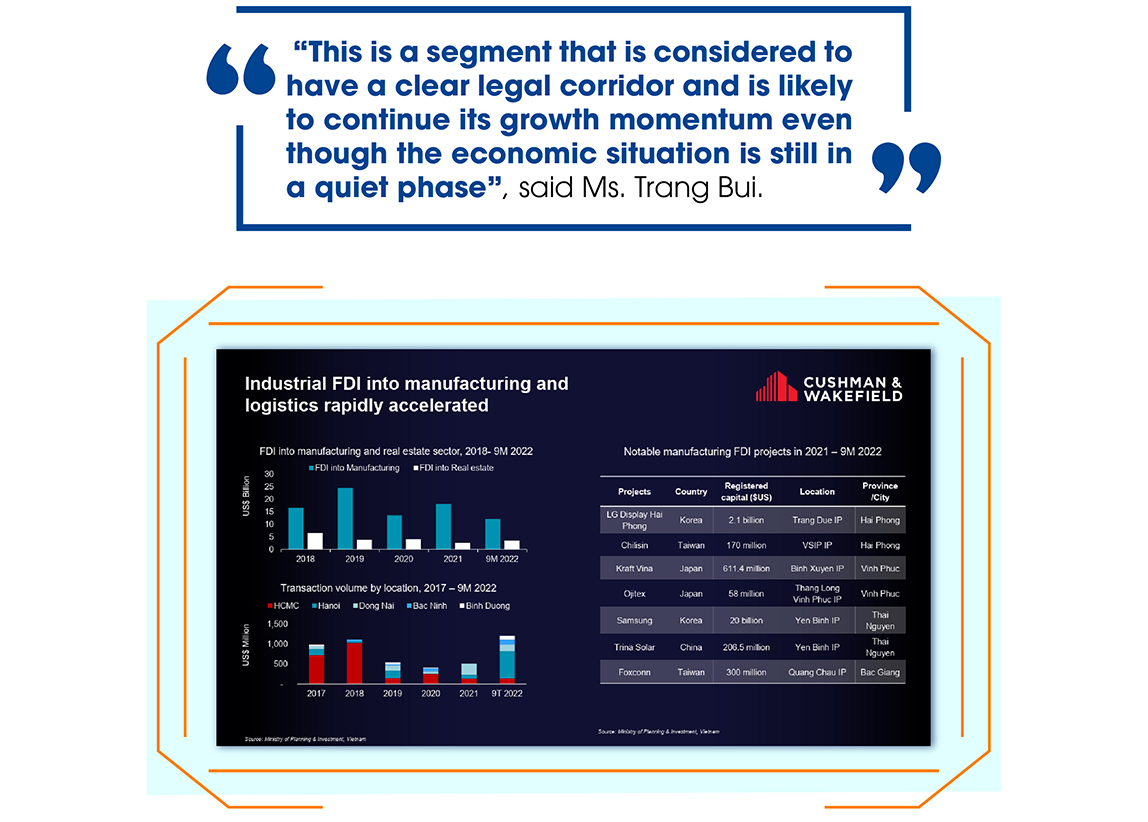
To explain this prediction, Ms. Trang Bui cited some forecasts for revenue growth of the e-commerce industry in Vietnam. The industry is expected to grow 37% by 2025, reaching about $39 billion.
Foreign investment in real estate also has steady growth, with a gradual shift to the North starting in 2018. Many multinational corporations such as LG, Samsung, and Foxcom continue to commit to investing in this area. Assessing the real estate market of the Northern industrial zone, Ms. Trang Bui said: The North has an industrial park real estate supply of more than 13,000 hectares, of which the key is Bac Ninh and Hai Phong – the main supply for ready-built factories and ready-built warehouses.

Such is the great demand and potential, but the situation of warehouses and factories in the North is quite worrying, with 50% having degraded and poor quality. The market will welcome future supply from large foreign investors.

Climate change is at an alarming rate globally, and businesses operating in the manufacturing sector – a sector that is considered quite sensitive to environmental impacts need to pay attention to the sustainability of the work.
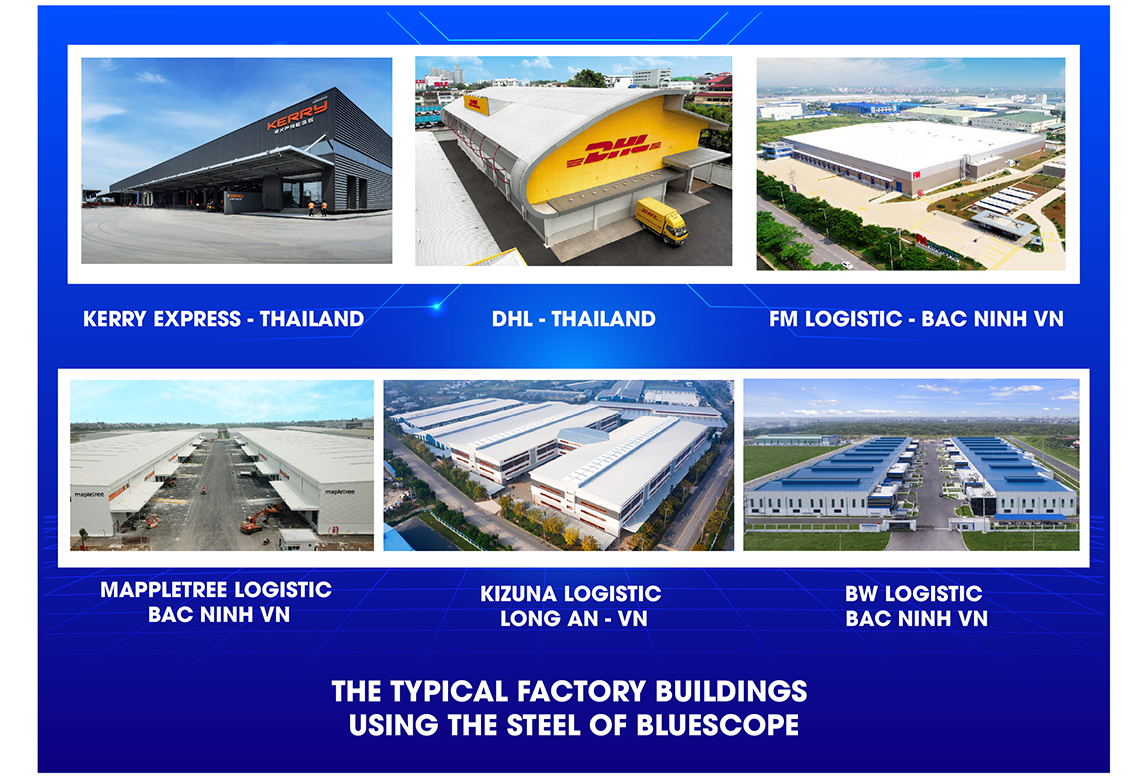
Ms. Lam To Trinh, Vice president of Innovation Creation and Business Development NS BlueScope Vietnam, revealed the three trends of the sustainable factory.
1 Energy balance – mitigating greenhouse gas emissions and protecting the ozone layer with a clear roadmap.
2 Sustainable materials – alloy-coated layer, the protective coat of the work with NS BlueScope Vietnam’s Activate™ unique 4 phases alloy-coated steel techlonogy.
3 Sandwich panel application trends – sandwich panels, with their numerous advantages, play an important role in preserving the building’s long-term beauty.


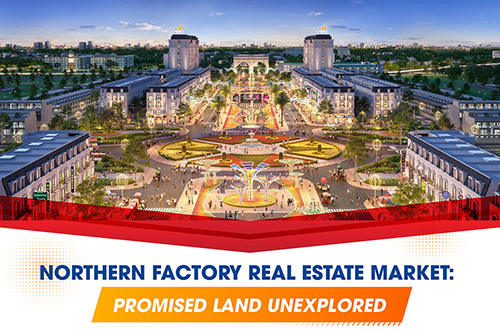





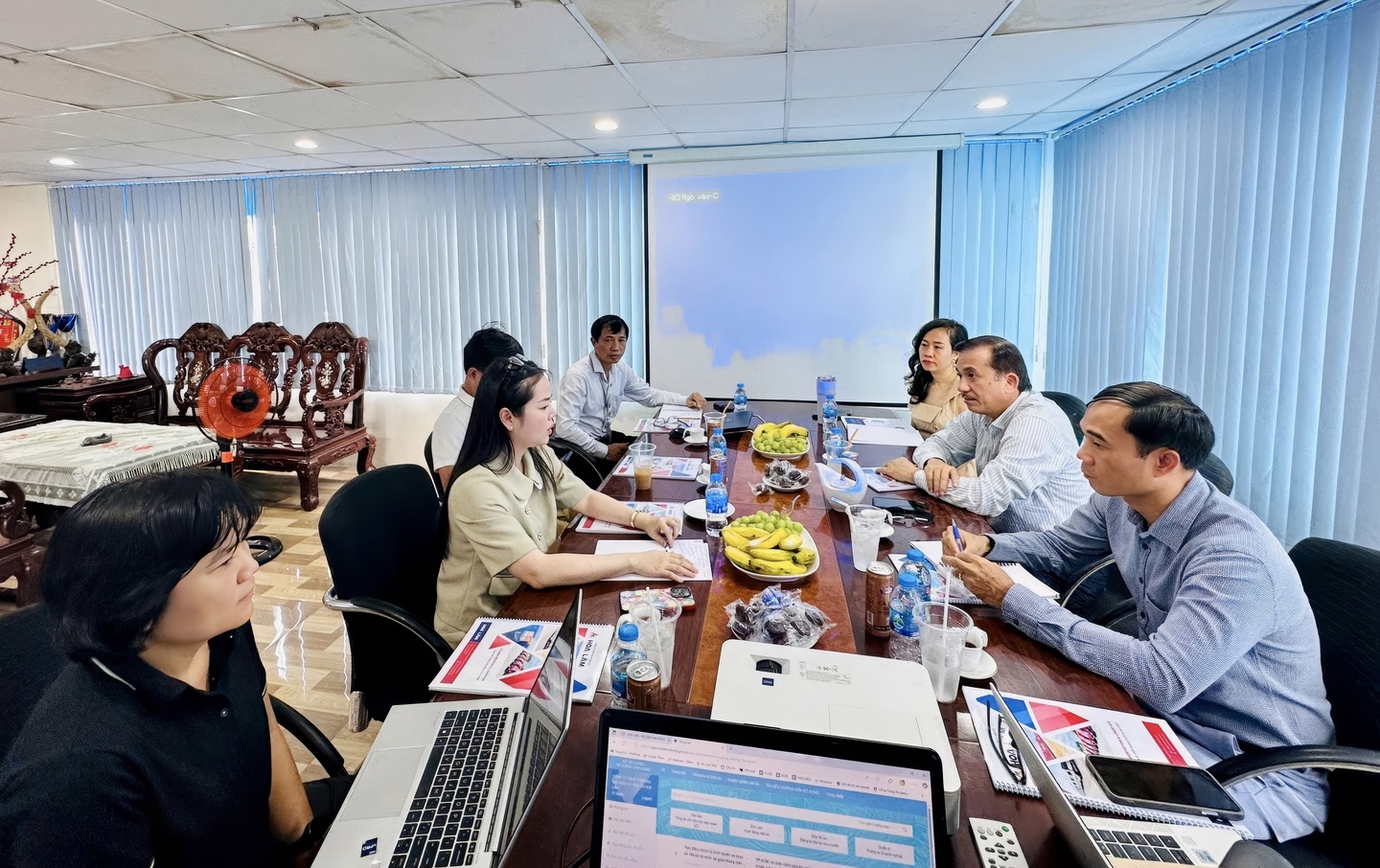
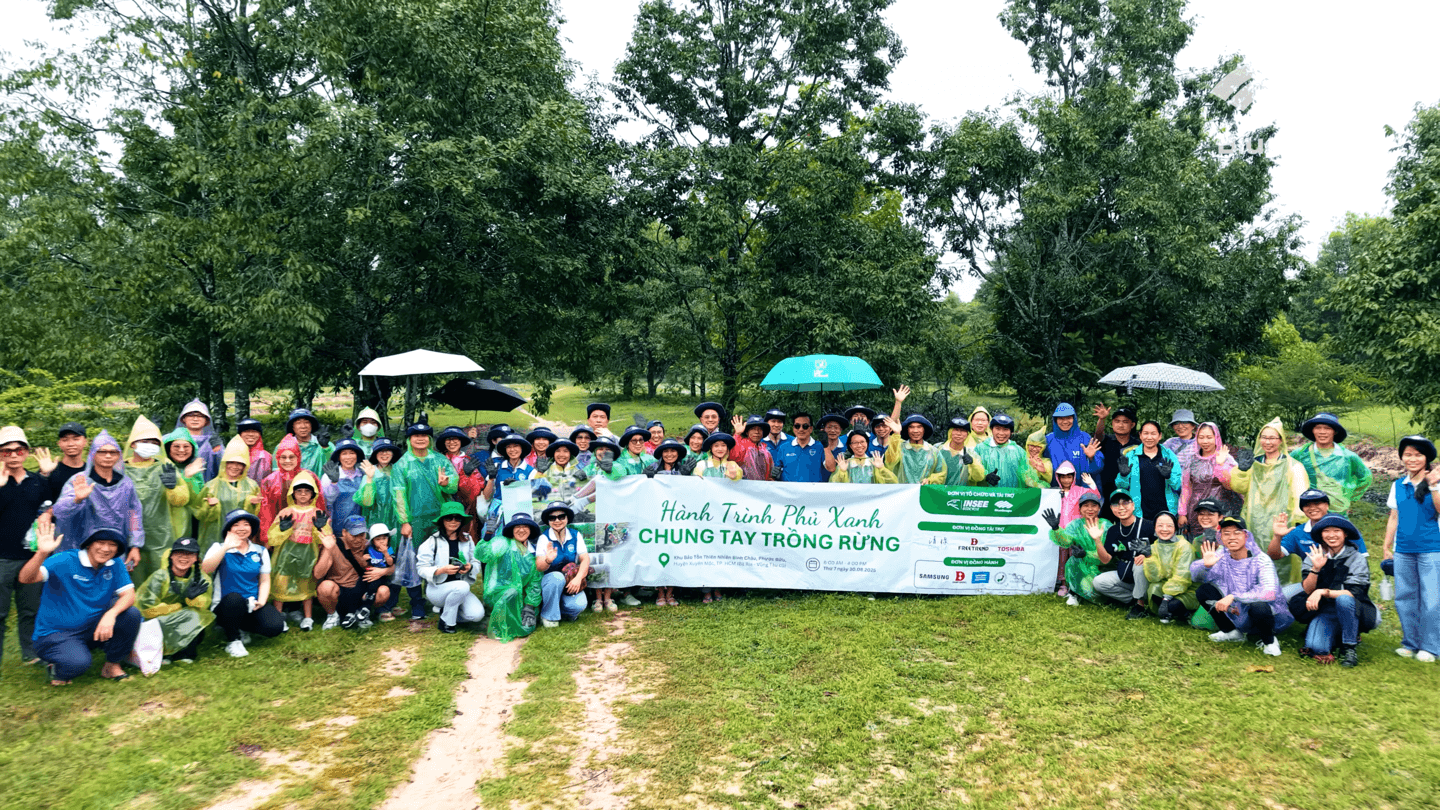
Comment